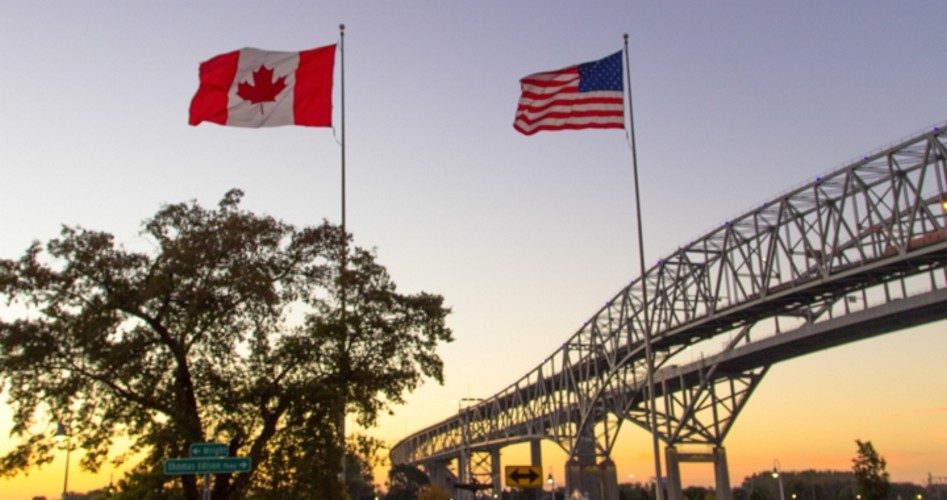
In a move that tracks with what other countries around the globe are doing in the fight against the coronavirus, the United States and Canada have jointly decided to temporarily close the border between the two nations. Essential trade traffic will not be affected by the shutdown, but citizens of the two nations will not be allowed to go freely back and forth.
“We will be, by mutual consent, temporarily closing our Northern Border with Canada to non-essential traffic. Trade will not be affected. Details to follow!” President Trump tweeted on Wednesday.
We will be, by mutual consent, temporarily closing our Northern Border with Canada to non-essential traffic. Trade will not be affected. Details to follow!
— Donald J. Trump (@realDonaldTrump) March 18, 2020
In a news conference later in the day, Trump said that he expects the closure to last “at least thirty days.” Trudeau was also non-committal when asked about the duration of the border closure.
“These measures will last in place as long as we feel that they need to last,” Trudeau said.
The move comes one day after the European Union closed its external borders in their own attempt to halt the spread of the virus.
On Monday, Canadian Prime Minister Justin Trudeau had closed Canada’s border to all foreign nationals with the exception of U.S. citizens. Trudeau, who is currently self-quarantined due to his wife, Sophie, testing positive for the virus, had exempted the United States due to “the level of integration of our two economies.”
Trudeau is right about that level of integration — especially for Canada. A large portion of Canada’s food supply comes directly from the United States, and a full 75 percent of Canadian exports go to America. Approximately 18 percent of U.S. exports go north to Canada.
“The Canada-U.S. border is the symbol of an unprecedented partnership. Every day, $2.7 billion-worth of goods and services passes through that border and that trade is essential to both our countries. Our business and way of life depend on that flow,” said Canada’s Minister of Public Safety Bill Blair.
According to Trudeau, he and Trump spoke about the move prior to the announcement. The prime minister also reiterated that the border closing is about non-essential travel: “Travelers will no longer be permitted to cross the border for recreation and tourism.”
“Our governments recognize it is critical that we preserve supply chains between both countries,” Trudeau said. “These supply chains ensure that food, fuel and life-saving medicines reach people on both sides of the border. Supply chains including trucking will not be affected by this new measure.”
For now, air travel between the two nations is continuing, although many airlines are slashing the number of flights between the two countries. Passengers arriving in Canada face screening and are required to self-quarantine for two weeks. Anyone displaying symptoms of the coronavirus will not be allowed into the country.
Currently, there are just over 10,700 confirmed cases of the virus in the United States with 160 reported deaths. Canada reports approximately 700 cases with nine deaths thus far.
By contrast, the CDC reports some 20,000 estimated deaths from influenza this year, including 136 children.
We need to gain a little perspective on what COVID-19 represents. We can’t allow the draconian actions that governments around the world are taking to prevent its spread to become a new normal each time a novel virus is uncovered.
Image: ehrlif via iStock / Getty Images Plus
James Murphy is a freelance journalist who writes on a variety of subjects, with a primary focus on the ongoing anthropogenic climate-change hoax and cultural issues. He can be reached at [email protected]




